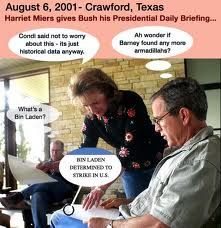This is your morning Open Thread. Pour your favorite beverage and review the past and comment on the future.
Find the past “On This Day in History” here.
Click on image to enlarge
August 12 is the 224th day of the year (225th in leap years) in the Gregorian calendar. There are 141 days remaining until the end of the year.
It is the peak of the Perseid meteor shower. It is also known as the “Glorious Twelfth” in the UK, as it marks the traditional start of the grouse shooting season.
On this day in 1990, fossil hunter Susan Hendrickson discovers three huge bones jutting out of a cliff near Faith, South Dakota. They turn out to be part of the largest-ever Tyrannosaurus rex skeleton ever discovered, a 65 million-year-old specimen dubbed Sue, after its discoverer.
Amazingly, Sue’s skeleton was over 90 percent complete, and the bones were extremely well-preserved. Hendrickson’s employer, the Black Hills Institute of Geological Research, paid $5,000 to the land owner, Maurice Williams, for the right to excavate the dinosaur skeleton, which was cleaned and transported to the company headquarters in Hill City. The institute’s president, Peter Larson, announced plans to build a non-profit museum to display Sue along with other fossils of the Cretaceous period.
The Field Museum hired a specialized moving company, with experience in transporting delicate items, to move the bones to Chicago. The truck arrived at the museum in October 1997. Two new research laboratories funded by McDonalds were created and staffed by Field Museum preparators whose job was to slowly and carefully remove all the rock, or “matrix” from the bones. One preparation lab was at Field Museum itself, the other was at the newly opened Animal Kingdom in Disney World in Orlando. Millions of visitors observed the preparation of Sue’s bones through glass windows in both labs. Footage of the work was also put on the museum’s website. Several of the fossil’s bones had never been discovered, so preparators produced models of the missing bones from plastic to complete the exhibit. The modeled bones were colored in a reddish hue so that visitors could observe which bones were real and which bones were plastic. The preparators also poured molds of each bone. All the molds were sent to a company outside Toronto to be cast in hollow plastic. Field Museum kept one set of disarticulated casts in its research collection. The other sets were incorporated into mounted cast skeletons. One set of the casts was sent to Disney’s Animal Kingdom in Florida to be presented for public display. Two other mounted casts were placed into a traveling tour that was sponsored by the McDonald’s Corporation.
Once the preparators finished removing the matrix from each bone, it was sent to the museum’s photographer who made high-quality photographs. From there, the museum’s paleontologists began the study of the skeleton. In addition to photographing and studying each bone, the research staff also arranged for CT scanning of select bones. The skull was too large to fit into a medical CT scanner, so Boeing’s Rocketdyne laboratory in California agreed to let the museum use their CT scanner that was normally used to inspect space shuttle parts.
Close examination of the bones revealed that Sue was 28 years old when she died, making her the oldest T. rex known. During her life this carnivore received several injuries and suffered from numerous pathologies. An injury to the right shoulder region of Sue resulted in a damaged shoulder blade, a torn tendon in the right arm, and three broken ribs. This damage subsequently healed (though one rib healed into two separate pieces), indicating Sue survived the incident. The left fibula is twice the diameter of the right one, likely a result of infection. Original reports of this bone being broken were contradicted by the CT scans which showed no fracture. Multiple holes in the front of the skull were originally thought to be bite marks by some, but subsequent study found these to be areas of infection instead, possibly from an infestation of an ancestral form of Trichomonas gallinae, a protozoan parasite that infests birds. Damage to the back end of the skull was interpreted early on as a fatal bite wound. Subsequent study by Field Museum paleontologists found no bite marks. The distortion and breakage seen in some of the bones in the back of the skull was likely caused by post-mortem trampling. Some of the tail vertebra are fused in a pattern typical of arthritis due to injury. The animal is also believed to have suffered from gout. In addition, there is extra bone in some of the tail vertebrae likely caused by the stresses brought on by Sue’s great size. Sue did not die as a result of any of these injuries; her cause of death is not known.
After the bones were prepared, photographed and studied, they were sent to New Jersey where work began on making the mount. This work consists of bending steel to support each bone safely and to display the entire skeleton articulated as it was in life. The real skull was not incorporated into the mount as subsequent study would be difficult with the head 13 feet off the ground. Parts of the skull had been crushed and broken, and thus appeared distorted. The museum made a cast of the skull, and altered this cast to remove the distortions, thus approximating what the original undistorted skull may have looked like. The cast skull was also lighter, allowing it to be displayed on the mount without the use of a steel upright under the head. The original skull is exhibited in a case that can be opened to allow researchers access for study. When the whole skeleton was assembled, it was forty feet (twelve meters) long from nose to tail, and twelve feet (four meters) tall at the hips.

 Alcatraz was an uninhabited seabird haven when it was explored by Spanish Lieutenant Juan Manuel de Ayala in 1775. He named it Isla de los Alcatraces, or “Island of the Pelicans.” Fortified by the Spanish, Alcatraz was sold to the United States in 1849. In 1854, it had the distinction of housing the first lighthouse on the coast of California. Beginning in 1859, a U.S. Army detachment was garrisoned there, and from 1868 Alcatraz was used to house military criminals. In addition to recalcitrant U.S. soldiers, prisoners included rebellious Indian scouts, American soldiers fighting in the Philippines who had deserted to the Filipino cause, and Chinese civilians who resisted the U.S. Army during the Boxer Rebellion. In 1907, Alcatraz was designated the Pacific Branch of the United States Military Prison.
Alcatraz was an uninhabited seabird haven when it was explored by Spanish Lieutenant Juan Manuel de Ayala in 1775. He named it Isla de los Alcatraces, or “Island of the Pelicans.” Fortified by the Spanish, Alcatraz was sold to the United States in 1849. In 1854, it had the distinction of housing the first lighthouse on the coast of California. Beginning in 1859, a U.S. Army detachment was garrisoned there, and from 1868 Alcatraz was used to house military criminals. In addition to recalcitrant U.S. soldiers, prisoners included rebellious Indian scouts, American soldiers fighting in the Philippines who had deserted to the Filipino cause, and Chinese civilians who resisted the U.S. Army during the Boxer Rebellion. In 1907, Alcatraz was designated the Pacific Branch of the United States Military Prison. In 1829, James Smithson died in Italy, leaving behind a will with a peculiar footnote. In the event that his only nephew died without any heirs, Smithson decreed that the whole of his estate would go to “the United States of America, to found at Washington, under the name of the Smithsonian Institution, an Establishment for the increase and diffusion of knowledge.” Smithson’s curious bequest to a country that he had never visited aroused significant attention on both sides of the Atlantic.
In 1829, James Smithson died in Italy, leaving behind a will with a peculiar footnote. In the event that his only nephew died without any heirs, Smithson decreed that the whole of his estate would go to “the United States of America, to found at Washington, under the name of the Smithsonian Institution, an Establishment for the increase and diffusion of knowledge.” Smithson’s curious bequest to a country that he had never visited aroused significant attention on both sides of the Atlantic.

 Heyerdahl and his five-person crew set sail from Callao, Peru, on the 40-square-foot Kon-Tiki on April 28, 1947. The Kon-Tiki, named for a mythical white chieftain, was made of indigenous materials and designed to resemble rafts of early South American Indians. While crossing the Pacific, the sailors encountered storms, sharks and whales, before finally washing ashore at Raroia. Heyerdahl, born in Larvik, Norway, on October 6, 1914, believed that Polynesia’s earliest inhabitants had come from South America, a theory that conflicted with popular scholarly opinion that the original settlers arrived from Asia. Even after his successful voyage, anthropologists and historians continued to discredit Heyerdahl’s belief. However, his journey captivated the public and he wrote a book about the experience that became an international bestseller and was translated into 65 languages. Heyerdahl also produced a documentary about the trip that won an Academy Award in 1951.
Heyerdahl and his five-person crew set sail from Callao, Peru, on the 40-square-foot Kon-Tiki on April 28, 1947. The Kon-Tiki, named for a mythical white chieftain, was made of indigenous materials and designed to resemble rafts of early South American Indians. While crossing the Pacific, the sailors encountered storms, sharks and whales, before finally washing ashore at Raroia. Heyerdahl, born in Larvik, Norway, on October 6, 1914, believed that Polynesia’s earliest inhabitants had come from South America, a theory that conflicted with popular scholarly opinion that the original settlers arrived from Asia. Even after his successful voyage, anthropologists and historians continued to discredit Heyerdahl’s belief. However, his journey captivated the public and he wrote a book about the experience that became an international bestseller and was translated into 65 languages. Heyerdahl also produced a documentary about the trip that won an Academy Award in 1951.
 Television, rock and roll and teenagers. In the late 1950s, when television and rock and roll were new and when the biggest generation in American history was just about to enter its teens, it took a bit of originality to see the potential power in this now-obvious combination. The man who saw that potential more clearly than any other was a 26-year-old native of upstate New York named
Television, rock and roll and teenagers. In the late 1950s, when television and rock and roll were new and when the biggest generation in American history was just about to enter its teens, it took a bit of originality to see the potential power in this now-obvious combination. The man who saw that potential more clearly than any other was a 26-year-old native of upstate New York named 
 The USS Nautilus was constructed under the direction of U.S. Navy Captain Hyman G. Rickover, a brilliant Russian-born engineer who joined the U.S. atomic program in 1946. In 1947, he was put in charge of the navy’s nuclear-propulsion program and began work on an atomic submarine. Regarded as a fanatic by his detractors, Rickover succeeded in developing and delivering the world’s first nuclear submarine years ahead of schedule. In 1952, the Nautilus’ keel was laid by President Harry S. Truman, and on January 21, 1954, first lady Mamie Eisenhower broke a bottle of champagne across its bow as it was launched into the Thames River at Groton, Connecticut. Commissioned on September 30, 1954, it first ran under nuclear power on the morning of January 17, 1955.
The USS Nautilus was constructed under the direction of U.S. Navy Captain Hyman G. Rickover, a brilliant Russian-born engineer who joined the U.S. atomic program in 1946. In 1947, he was put in charge of the navy’s nuclear-propulsion program and began work on an atomic submarine. Regarded as a fanatic by his detractors, Rickover succeeded in developing and delivering the world’s first nuclear submarine years ahead of schedule. In 1952, the Nautilus’ keel was laid by President Harry S. Truman, and on January 21, 1954, first lady Mamie Eisenhower broke a bottle of champagne across its bow as it was launched into the Thames River at Groton, Connecticut. Commissioned on September 30, 1954, it first ran under nuclear power on the morning of January 17, 1955.